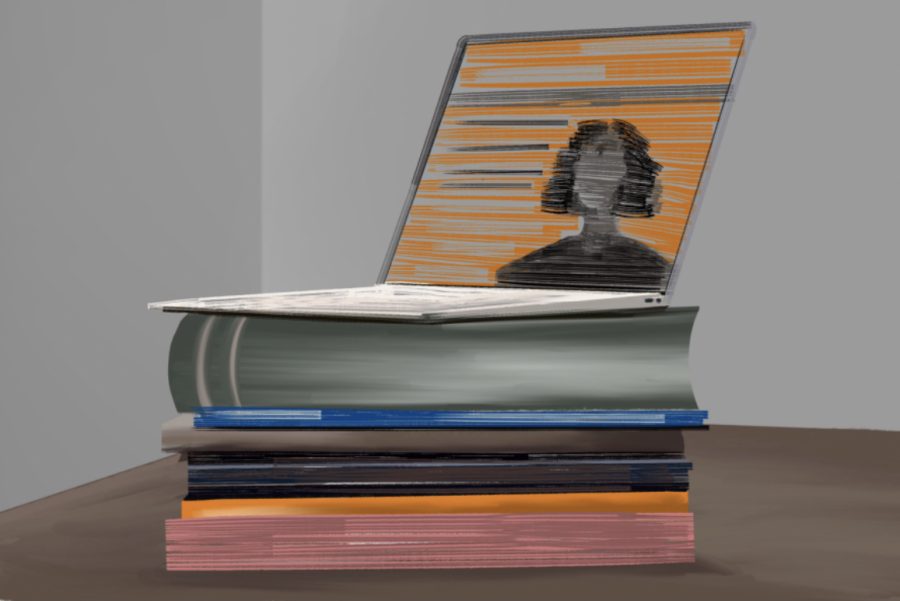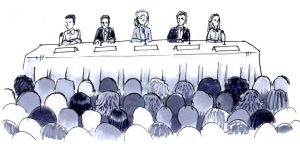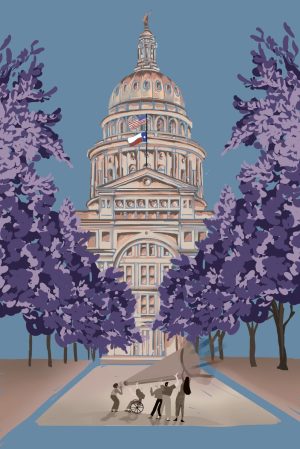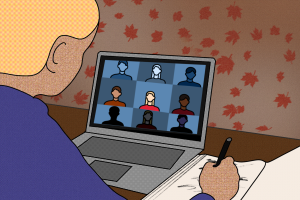Professors should provide lecture slides
November 30, 2022
You have an exam coming up, and you’re sitting in a full lecture hall listening intently to your professor. However, they teach without guiding slides, and you accidentally miss an important term. You ask a peer for help, but they are too focused on the lecture to be able to help. There are no recorded lectures or notes posted to Canvas to help you prepare for the exam. In the end, you lose points on the exam because there were no slides, recordings or notes posted anywhere to supplement lectures.
I had a similar experience to this. My professor utilized only slides with pictures, did not record lectures and left our Canvas page essentially empty. Additionally, the large class size made asking questions feel intimidating.
Finance sophomore Lauren Spheeris described her struggles in a class where the professor did not provide supplemental resources during class or on the Canvas page.
“It was a lecture-based class without any notes on the screen, which really was not helpful … oftentimes, I would miss important dates or names, or not know how to spell certain things,” Spheeris said. “It was just really hard to follow along.”
Slides are a simple way of avoiding this problem. When the key terms are provided on a slide, students don’t need to worry about missing major things and can focus on the details of each term. Slides with a few important bullet points serve as a guide to students in content-heavy lectures.
Radio-television-film assistant professor Jennifer McClearen provides slides with main points, images and videos in her courses.
“Some people don’t learn really well using auditory skills only, especially people with learning differences or disabilities, or if English is not their first language. Sometimes listening only could be a huge challenge for students,” McClearen said. “Not having those materials accessible means that it would be a lot harder for students like that to be able to keep up with what’s most important in the class.”
Courses without ample resources for students can put them at an academic disadvantage.
“I’m at a disadvantage when I’m taking a class with this lack of information, and my grade could be at a disadvantage compared to someone else’s class that may be getting more materials,” Spheeris said.
Karl Gebhardt is an astrophysics professor who provides lecture recordings but chooses to not use slides during class.
“I hate slides. We’ve just become so complacent, and there’s no interaction. ‘Where’s the slide?’ The slide pops up, ‘Oh, what word or what phrase do I need to know?’” Gebhardt said. “For some reason, there’s a need to not use the brainpower of the students.”
Dr. Gebhardt raises the point that slides allow students to not pay attention and copy down terms, rather than reasoning them out. However, this is only true if the slides are paragraphs full of nearly everything the professor says.
“The research supports the idea that it’s important to have audiovisual materials and slides because it really does help students learn,”McClearen said.
If the slides only have general information on important terms, students still have to choose what information is crucial enough to write down, such as the details for each term on the slides.
Using simple, guiding slides is mutually beneficial as students can follow along to lecture better and the professor can get better results from their students.
Melinger is a radio-television-film sophomore from Highland Park, Illinois.
















